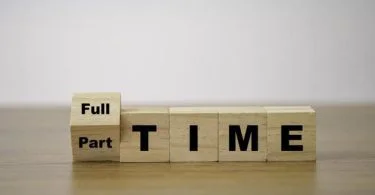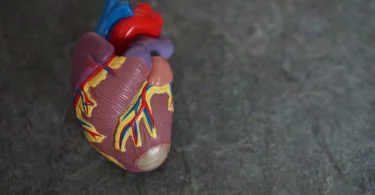Experiential Learning (EL) and Project-Based Learning (PBL) are two pedagogical approaches designed to provide students with hands-on, practical learning experiences. While both approaches emphasise active participation and real-world application, their focuses, methodologies, and learning outcomes are distinct. Experiential learning emphasises the direct experience of the individual learner as the primary source of knowledge acquisition. It focuses on the learner’s reflection, critical analysis, and synthesis of experiences to derive meaning and comprehension. The EL process follows a four-stage cyclical paradigm of concrete experience, reflective observation, abstract conceptualisation, and active experimentation. Learners acquire new skills, knowledge, and attitudes based on their experiences by repeatedly cycling through these stages.
On the other hand, project-based learning is a collaborative approach in which students investigate real-world problems or challenges and create tangible solutions or products in groups. PBL emphasises interdisciplinarity, critical reasoning, and problem-solving abilities. Teachers serve as facilitators, guiding students through the process and offering assistance as necessary. Typically, PBL projects are longer and entail multiple phases of inquiry, research, design, development, and evaluation. EL emphasises personal experience and reflection, while PBL emphasises collaborative problem-solving and interdisciplinary learning via group initiatives.
What is Experiential Learning?
Experiential Learning (EL) is a way of teaching that stresses the value of direct experience and reflection in the learning process. It is based on the idea that knowledge is acquired and transformed when the learner is actively involved in real-world situations. EL goes beyond passive, lecture-based learning and pushes students to take charge of their education by participating in different activities.
EL is based on the work of David Kolb, who made the Experiential Learning Cycle, a four-step model that shows how people learn from their own experiences. The cycle consists of the following:
Concrete Experience
Learners put themselves in new situations or do new things where they have first-hand experiences that help them learn.
Reflective Observation
Learners take a step back from their experiences and think about them from different points of view.
Abstract Conceptualisation
Learners draw conclusions, develop new ideas or concepts, and link their experiences to what they already know and theories they’ve studied.
Active Experimentation
Learners test the validity and usefulness of the new ideas by using them in new settings. This starts the cycle over again.
Experiential learning helps people think critically, solve problems, and learn independently. It works best for adult learners and can be used in various fields and settings, like occupations, workshops, simulations, or service-learning projects. EL supports people to adapt and grow in a constantly changing world by emphasising experience and reflection.
What is Project-Based Learning?
Project-Based Learning (PBL) is a way of teaching students to work together to solve real-world problems. It encourages students to study complex issues in a hands-on manner and gain deep knowledge by making natural products or solutions. PBL encourages learning across disciplines, critical thinking, and the development of essential skills for the 21st century.
In PBL, students work in groups to solve a question or problem that is important to them and fits with what they are learning. Usually, the process includes several steps, such as:
Project Initiation
Teachers give students a problem or task and help them determine the question that will drive their research.
Research and Investigation
Students gather information, look at different sources, and talk with each other to learn more about the problem.
Planning and Design
Students work on and improve their ideas, plan, and divide tasks.
Implementation and Development
Students work together to make the end product – an object, a presentation, or a performance.
Evaluation and Reflection
Students evaluate their work based on set standards, think about what they’ve learned, and look for ways to improve.
Teachers help to make PBL work by giving advice, resources, and support when required. Most of the time, assessment in PBL is formative and ongoing, focusing on both the process and the result. By working on real, essential projects, students learn more about the topic, improve their communication and teamwork skills, and become more motivated and self-directed as learners.
Difference Between Experiential Learning and Project-Based Learning
Experiential Learning, also known as EL, and Project-Based Learning, often known as PBL, are both methods of education that emphasise hands-on practice. Following a circular model of concrete experience, reflecting observation, abstract conceptualisation, and active experimentation, EL places a premium on human experience and reflection as significant sources of knowledge acquisition. In contrast, project-based learning (PBL) makes students work together to tackle authentic issues and develop workable solutions while fostering interdisciplinary understanding, critical reasoning, and problem-solving abilities. PBL emphasises teamwork and multidisciplinary learning through group projects that address real-world problems or difficulties, while EL emphasises the individual learner through direct experience and reflection. The key difference between the two is outlined below.
Focus
In contrast to PBL’s focus on group work and problem-solving, EL places a premium on individual study and analysis.
Learning Process
Experience, introspection, conceptualisation, and experimentation are part of the EL cycle. Problem identification, research, planning, implementation, and evaluation are all steps in the structured process of PBL.
Individual vs Group
In contrast to PBL’s emphasis on group work and collaboration, EL prioritises the experiences of individual students.
Teacher’s Role
The role of the educator in EL is that of a guide for students learning and introspection. In PBL, the instructor works with the students to ensure their success at every project stage.
Learning Outcomes
Individual development, self-awareness, and flexible learning are all aided by EL. PBL helps students improve their analytical, interpersonal, and problem-solving abilities.
Duration
PBL projects typically take several weeks or months, while EL experiences might be short or ongoing.
Assessment
Assessment in EL centres on the learner’s development and introspection, while in PBL, the learning process and the outcome are graded.
Application
Workshops, internships, and community service are examples of successful use of EL. Students engage in cross-curricular projects that tackle authentic issues in the real world as part of PBL in the classroom.







